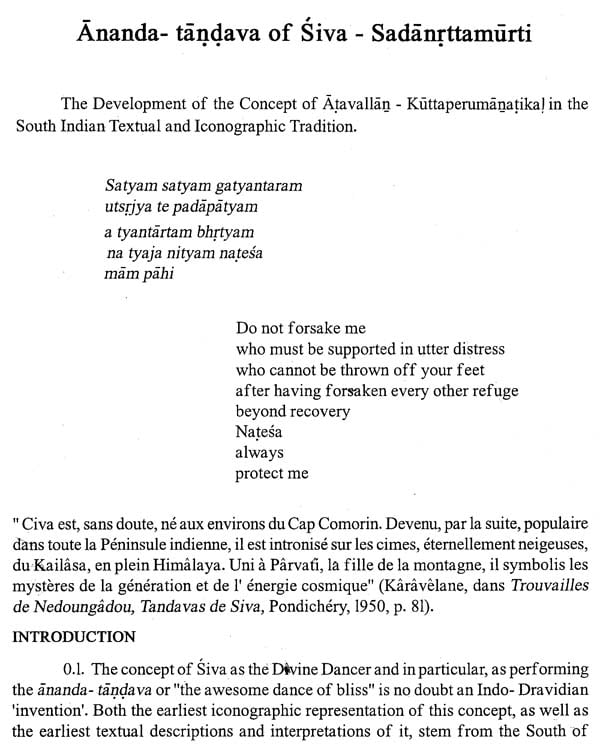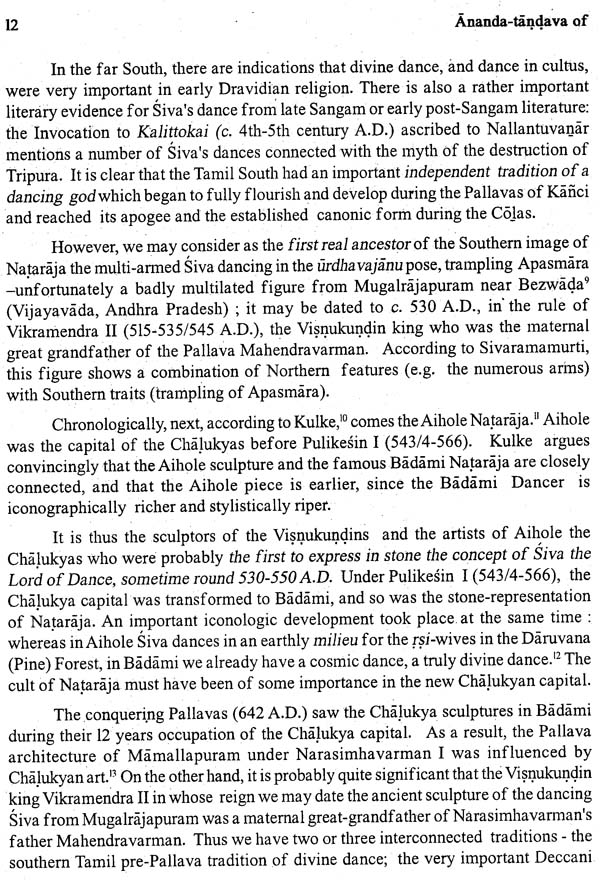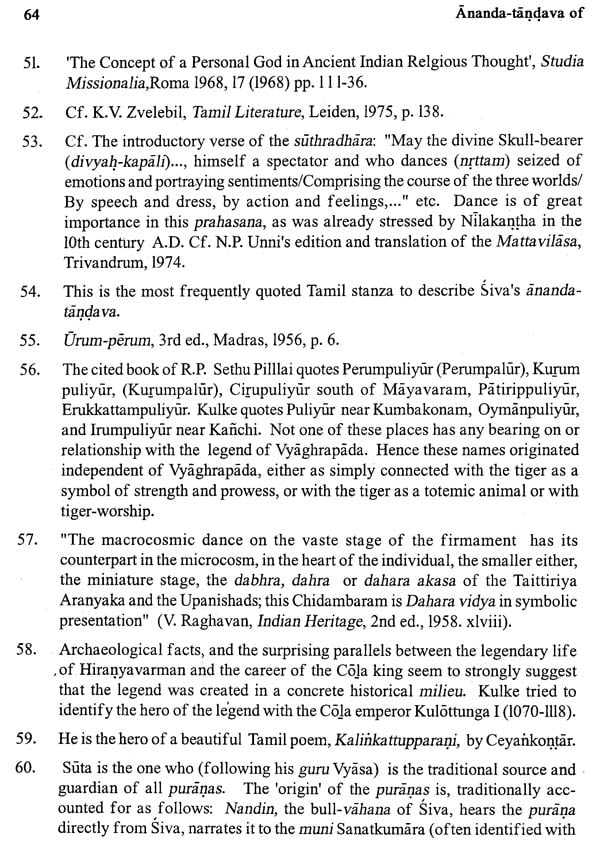
Ananda- Tandava of Siva - Sadanrttamurti
Book Specification
| Item Code: | NAY771 |
| Author: | Kamil V. Zvelebil |
| Publisher: | Institute of Asian Studies, Chennai |
| Language: | English |
| Edition: | 1998 |
| Pages: | 72 (11 B/W Illustrations) |
| Cover: | PAPERBACK |
| Other Details | 9.50 X 7.50 inch |
| Weight | 190 gm |
Book Description
Prof. Zvelebil examines the Nadaraja concept from various angles: mythological, historical, literary, anthropological, sociological and cultural. Apart from finding the Ananda - tandava myth a source of inexhaustible artistic creativity and an archetypal pattern of great cultural significance, the author sees it as a deep-rooted, pervasive 'image in the collective consciousness of the Indian mind. Again, not only does Dr. Zvelebil place Ananda tandava in the central tradition of Tamil aesthetic creativity, but he finds it an evolutionary product of the art of dancing in Tamil Nadu.
The present book Ananda-tandava of Siva-Sadanrttamarti is more comprehensive and methodologically more complete: Besides it is of more cultural and literary significance. While the mythological and literary nuances of Murugan and Murugan-worship are relatively less complex and less obscure, those connected with Siva, especially origin and development of the Nataraja cult present complex problems, cultural and religious on the one hand and literary and epigraphical on the other. The treatment in the present book is marked by more rigorous and impressive uses of the tools of comparison and analysis, a wider perspective and deeper insights. As such, it is more critically rewarding.
It must be stressed at the outset that Dr. Zvelebil's Ananda-tandava is neither a work on the totemic foundations of the Hindu religion, nor is it a theological treatise. Again, it is very little concerned with studying the puranic dimensions of the Siva myth vis-a-vis the sociology of the Hinduism. A work of consummate critical scholarship, it sets out to evaluate the human significance of a primordial religiocultural deviance on the one hand, and on the other to present a historically valid account of the origin and nature of a complex mythic tradition.
A felt assertiveness marks the thesis of the book that the concept of Siva as a Divine Dancer, and in particular, performing the ananda-tandava is an "Indo-Dravidian 'invention"'.
Book's Contents and Sample Pages










